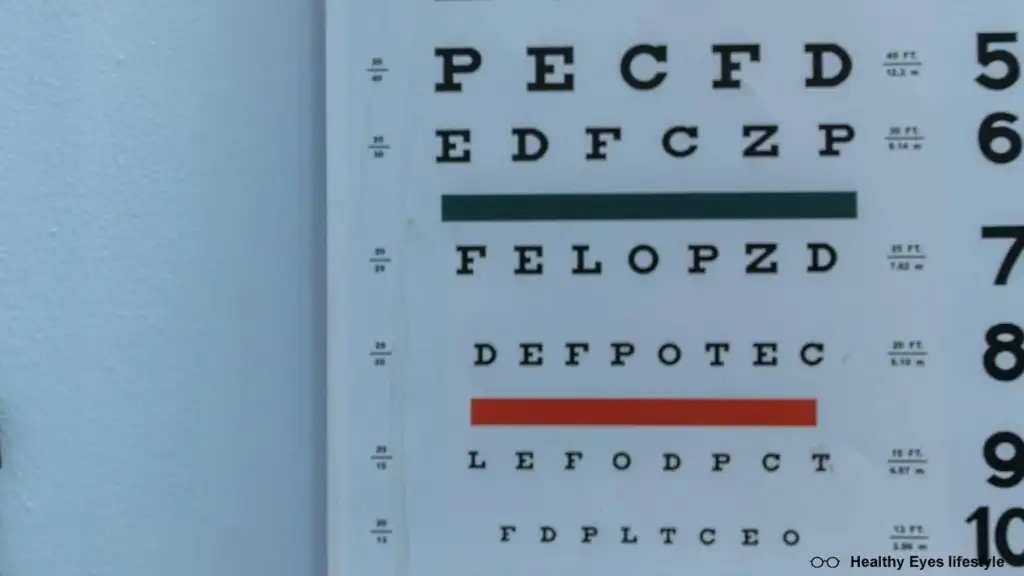Share This Article
Table of Contents
1. Introduction to Myopia
Myopia, commonly known as nearsightedness, is a refractive error where distant objects appear blurry while close-up objects remain clear. A myopic eyeball might be longer than a normal eyeball, or the cornea is too curved, and this causes the light to focus in front of the retina and not on it.. With the increasing use of digital screens and more time spent indoors, myopia has become more prevalent, affecting millions of people worldwide.
While corrective measures like glasses, contact lenses, or refractive surgery are the traditional solutions, there’s growing interest in the role of eye exercises in managing or improving myopia symptoms. This article explores various exercises and their potential benefits.

2. Causes of Myopia
Myopia can develop due to various factors, including:
- Genetics: A family history of myopia increases your likelihood of developing it.
- Environmental Factors: Prolonged near tasks, such as reading or screen use, can strain the eyes and contribute to the progression of myopia.
- Lifestyle: Lack of outdoor activities and exposure to natural light has also been linked to the condition.
Understanding these factors can help manage myopia, though eye exercises may play a role in alleviating some of its symptoms.
3. Can Eye Exercises Cure Myopia?
Eye exercises, often associated with vision therapy, are designed to strengthen the muscles around the eye and improve focusing skills. However, it’s essential to understand that eye exercises cannot “cure” myopia.
They may help improve the efficiency of your visual system, reduce strain, and potentially slow the progression of the condition. For those with mild myopia or eye fatigue due to screen time, these exercises can enhance comfort and reduce symptoms like dry eyes or headaches.

4. Top Eye Exercises for Myopia
4.1 Blinking Exercise
Purpose: Improve moisture and reduce eye strain.
How to Perform:
- Sit comfortably and relax.
- Blink rapidly for 2 minutes.
- Pause and close your eyes for 20 seconds.
Benefits: Enhances tear production, reduces dryness, and refreshes tired eyes.
4.2 Focus Change
Purpose: Strengthen eye muscles by shifting focus.
How to Perform:
- Hold a pen or your thumb at arm’s length in front of you.
- Focus on the pen, then slowly bring it closer to your eyes.
- Stop when it is about 6 inches from your face.
Benefits: Improves the ability to shift focus between distances, reducing strain during near work.
4.3 Near and Far Focus
Purpose: Enhance focusing ability and distance vision.
How to Perform:
- Choose two objects—one nearby and one further away (at least 20 feet).
- Focus on the nearby object for 10-15 seconds, then switch to the distant one.
Benefits: Helps improve the coordination of eye muscles and may assist in managing nearsightedness.
4.4 Palming
Purpose: Relax the eyes and reduce stress.
How to Perform:
- Rub your hands together to generate heat.
- Place the palms over your closed eyes without applying pressure.
Benefits: Promotes relaxation and can relieve eye fatigue caused by prolonged near tasks.
4.5 Eye Rolling
Purpose: Strengthen the eye muscles and increase flexibility.
How to Perform:
- Sit comfortably.
- Look to your left and slowly roll your eyes clockwise, completing a full circle.
- After one complete rotation, switch directions.
Benefits: Improves muscle flexibility and blood circulation to the eyes.
5. How Often Should You Perform Eye Exercises?
To achieve the best results, perform these exercises 2-3 times a day. Incorporating them into your daily routine, especially if you spend long hours in front of a screen, can provide relief and maintain eye health. Consistency is key, but it’s also important to remember that these exercises are a supplement to other myopia management methods.
6. Benefits of Eye Exercises for Myopia
- Improved Focus: Exercises like near and far focus enhance the ability to shift focus, which can be particularly useful in reducing digital eye strain.
- Reduced Eye Fatigue: Regular practice helps relieve tension in the eye muscles, offering a sense of relaxation after long periods of near work.
- Better Eye Muscle Coordination: Activities that involve focusing on different distances help strengthen the coordination between the muscles responsible for eye movement.
| Benefit | Description |
| Focus Improvement | Exercises help train the eyes to focus on both near and distant objects more efficiently. |
| Relaxation | Activities like palming offer relaxation to strained muscles. |
| Eye Muscle Strengthening | Eye rolling and other exercises improve muscle flexibility and coordination. |

7. Limitations and Considerations
While eye exercises provide several benefits, they have limitations. Myopia results from the elongation of the eyeball or changes in the cornea’s shape—an anatomical alteration that exercises cannot reverse. Corrective lenses remain essential for clear vision, especially for moderate to severe myopia.
Always consult with an eye care professional before starting any exercise regimen. Regular eye exams are crucial in monitoring the progression of myopia and adjusting your corrective measures accordingly.
8. Tips for Eye Health and Myopia Management
- Take Breaks: Follow the 20-20-20 rule—every 20 minutes, look at something 20 feet away for at least 20 seconds.
- Outdoor Time: Studies suggest spending more time outdoors, particularly in natural light, can slow the progression of myopia.
- Healthy Diet: Nutrients like omega-3 fatty acids, vitamin A, and zinc are beneficial for eye health.
- Limit Screen Time: Reduce extended screen use, particularly in children, to prevent the progression of myopia.
| Tips | Why They Help |
| Regular Breaks | Helps reduce continuous strain from near tasks. |
| Outdoor Time | Exposure to natural light can help slow the progression of myopia. |
| Healthy Diet | Supports overall eye health and reduces strain. |
| Limit Screen Time | Reduces myopia progression, especially in children. |
10. Conclusion
While eye exercises are not a cure for myopia, they offer a natural way to improve eye muscle strength, reduce strain, and promote relaxation. Regular practice, coupled with healthy lifestyle habits like reducing screen time and spending more time outdoors, can benefit overall eye health. Always remember to consult with an eye care professional to ensure that you’re on the right track in managing your myopia effectively.
FAQS
Can eye exercises cure myopia? A: No, eye exercises cannot cure myopia, but they can improve eye muscle strength and reduce strain.
How long should I practice eye exercises daily? A: Around 10-15 minutes per session, 2-3 times a day, is a good starting point.
Can eye exercises prevent myopia from worsening? A: While exercises won’t stop the progression, they may help manage symptoms and reduce strain.



